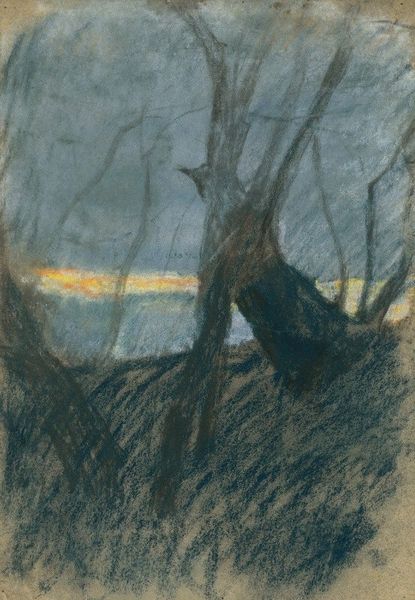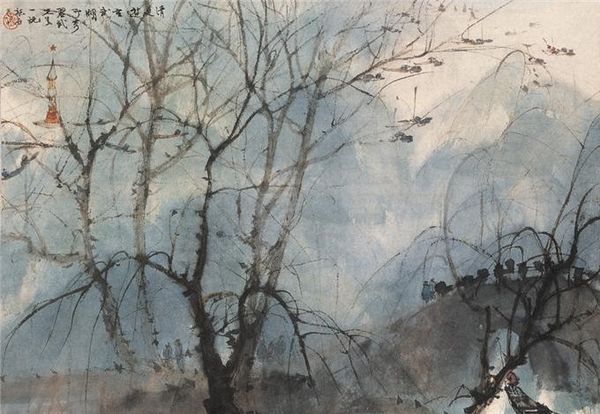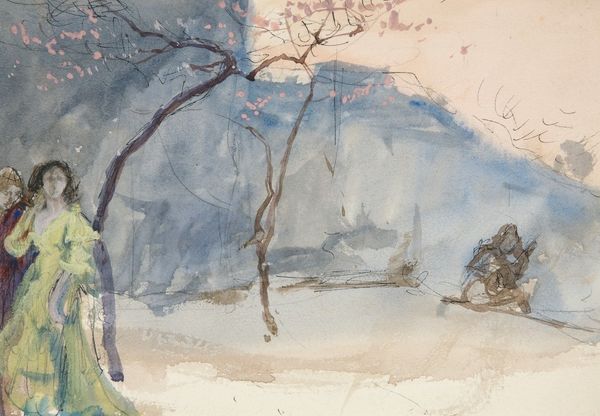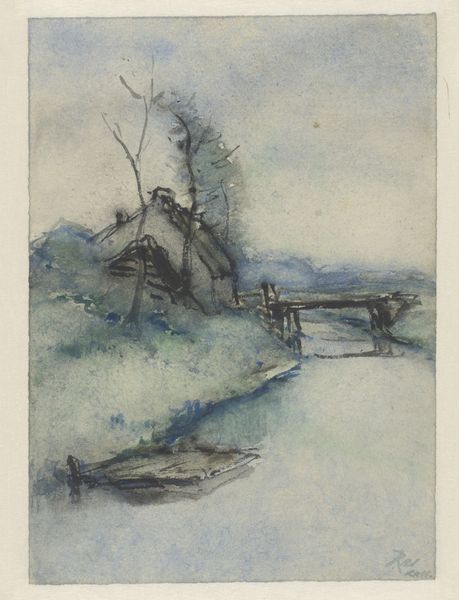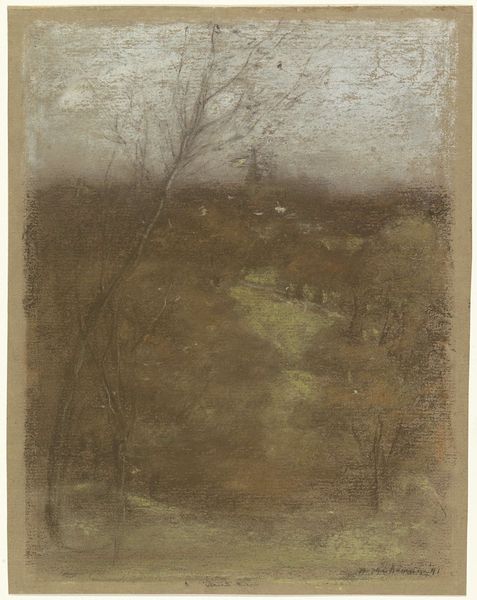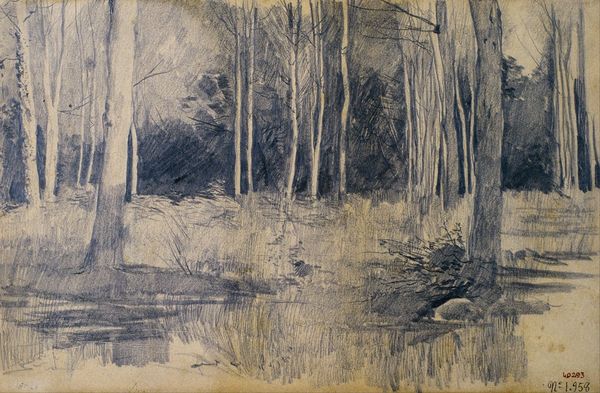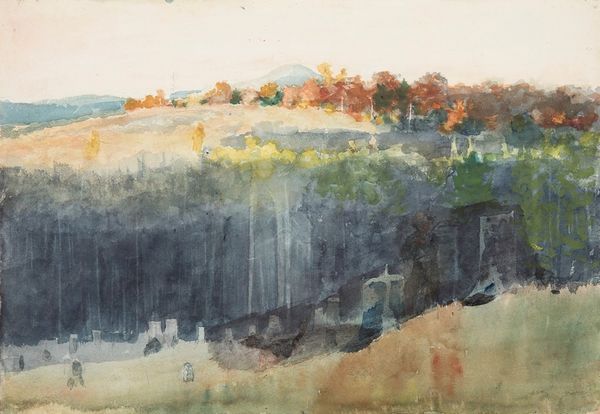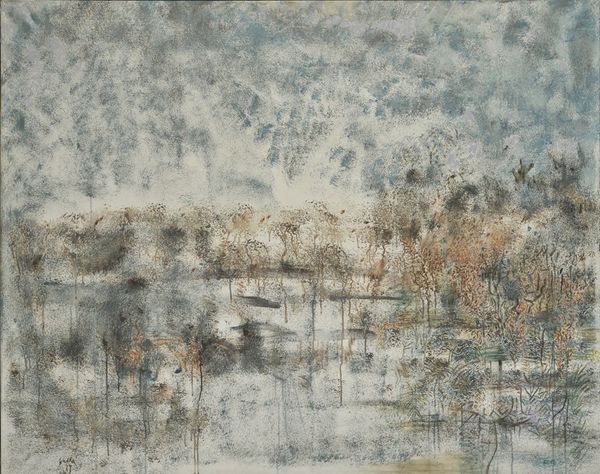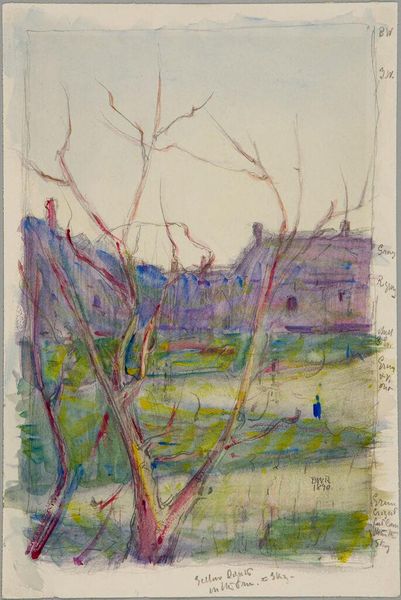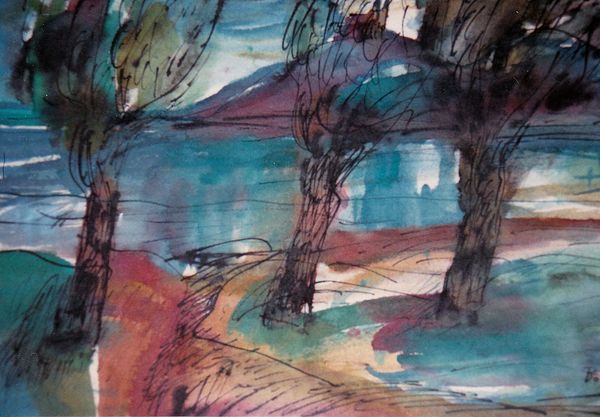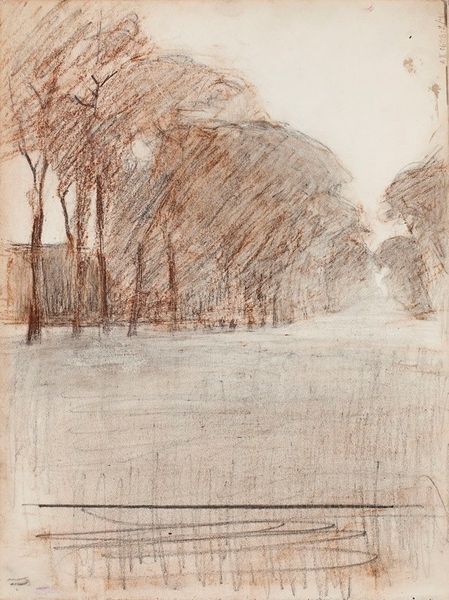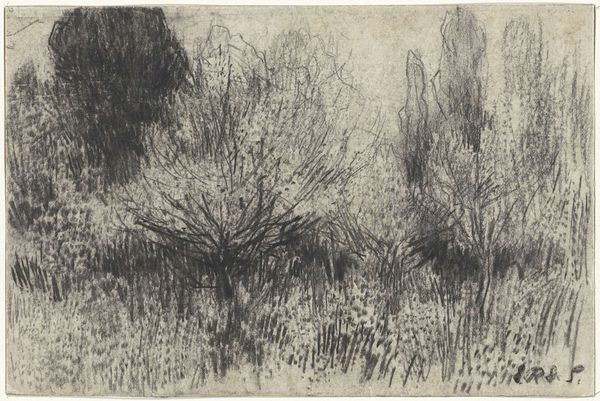
Dimensions: overall: 17.3 x 17.6 cm (6 13/16 x 6 15/16 in.)
Copyright: National Gallery of Art: CC0 1.0
Editor: This is John Marin's *Landscape*, believed to be created between 1895 and 1900, using watercolor and tempera. There's such a tranquil feel, like a misty morning. What do you make of it? Curator: This watercolor offers a fascinating insight into the American art scene at the turn of the century. The impressionistic style points to an influence from European movements, but the choice of landscape as subject reflects an emerging American identity, concerned with defining its own visual language. How do you think its original exhibition context might shape its reception? Editor: That's interesting... maybe it was meant to project a romantic ideal of the American countryside, something untouched and pure? Curator: Precisely. Museums at that time were actively constructing a narrative of national identity. Landscape painting served a powerful ideological purpose. Considering that Marin later became associated with more avant-garde circles, like Alfred Stieglitz’s 291 gallery, this early work offers a contrasting point. Do you notice how this piece is in *plein air*? Editor: I see how the style and technique of *plein air* bring the scene to life, even though it feels more about a sense of place than photographic realism. Curator: Right. Marin wasn’t just depicting a scene; he was conveying an experience. Think about the role of art institutions – were they more focused on representing a distinct idea of America or on promoting emerging talent? Editor: I guess it's both, right? Presenting new visions but within a frame that's already deemed "American." It really makes you wonder about how art gets filtered through institutions. Curator: Indeed. And considering those forces is what gives us a more comprehensive picture, not just of the art itself, but of the society that created it. Editor: It makes me rethink my initial response; there's a lot more to it than just "tranquil". Thanks for broadening my perspective. Curator: My pleasure. Art always reflects and refracts the world around it.
Comments
No comments
Be the first to comment and join the conversation on the ultimate creative platform.
